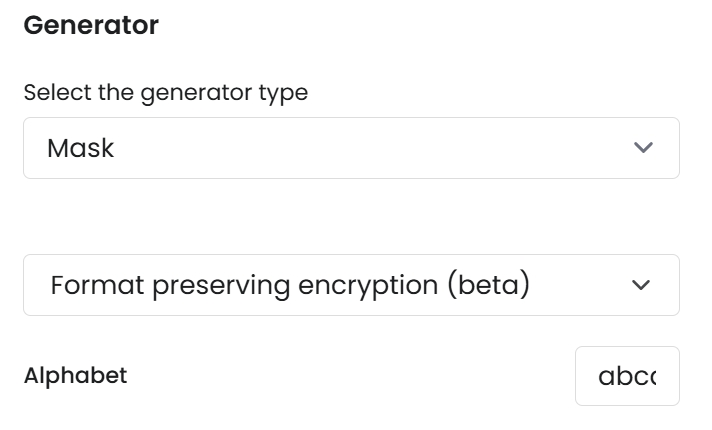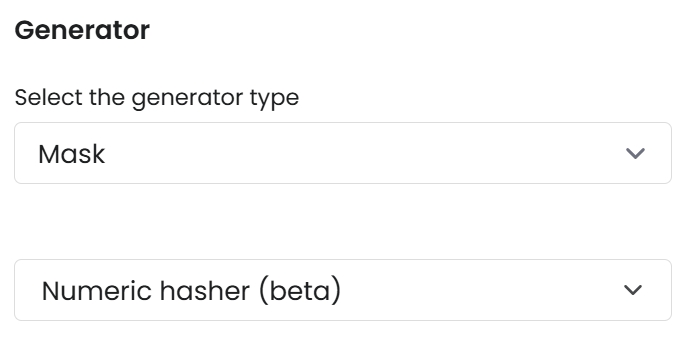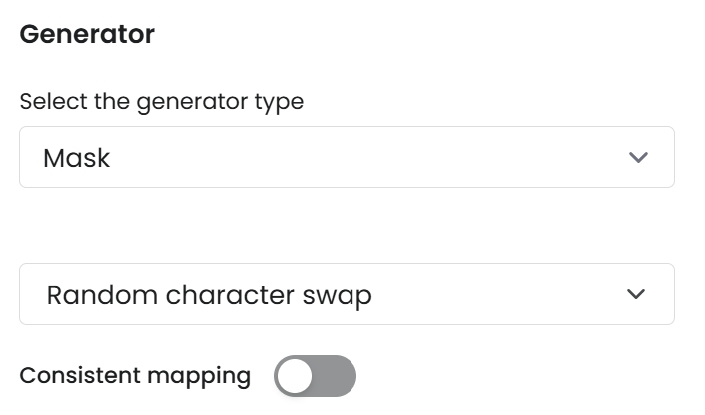Text
Below is a list of available text mask functions.
Format Preserving Encryption (FPE)
The Format Preserving Encryption (FPE) function utilizes the FF3 algorithm to encrypt sensitive data while preserving its original format and length. This makes it ideal for fields where the data's structure must remain intact (e.g., credit card numbers or dates). Note that it preserves data format during encryption and supports unique and randomized subsets for varied datasets.
Parameters
Alphabet: By default, it contains all ASCII letters, uppercase and lowercase and numbers.
Example
If you configure:
Alphabet: abcdefghijklmnopqrstuvwxyzABCDEFGHIJKLMNOPQRSTUVWXYZ 0123456789The results will be:
0kVRnFWud,
uCgInrq6,
772edmb G,
...
Numeric Hasher
The Numeric Hasher function provides secure hashing for categorical values. This method replaces original values with a hashed representation, ideal for ensuring data privacy while maintaining referential integrity in numerical datasets. Note that It maintains the original structure of hashed fields. and the minimum number of characters depends on the size of the alphabet used, typically resulting in a minimum of 4 characters in a consistent manner. To ensure accurate ordering, please see ordering and indexing considerations.
Parameters
No parameters.
Example
If you configure:
The results will be:

Random Character Swap
The Random Character Swap function replaces individual characters in categorical values while preserving the structure of punctuation, spaces, and symbols. Characters are swapped within their respective categories (letters with letters, digits with digits), ensuring that the field's overall format remains usable, or in other words, the original data type and structure of each field (letters, numbers, symbols) are preserved. Note that it preserves non-alphabetic characters (e.g., punctuation, spaces).
Parameters
Consistent mapping: Random Character Swap supports consistent mapping.
Example
If you configure:
The results will be:

Was this helpful?

